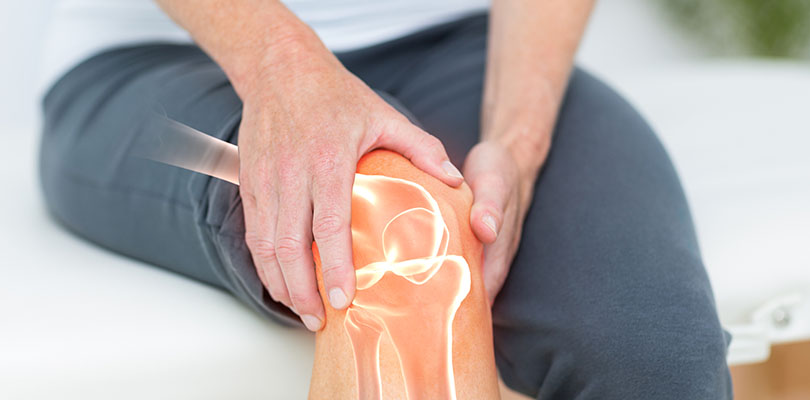Carpal Tunnel Exercises
Don’t take your hands for granted. When carpal tunnel sets in, you may have difficulty with grasping and holding functions, which affects much of your day-to-day life. Having perpetually sore wrists and hands make many things more difficult, including exercise.
Benefits of Carpal Tunnel Exercises
Along with doctor-prescribed treatments for carpal tunnel syndrome, nerve-gliding exercises might help the median nerve move normally and alleviate some of your issues and symptoms.
There are certain exercises which may help mild to moderate carpal tunnel symptoms when combined with other treatments and they may even assist in healing trauma to the wrist which occurs after surgery.
As with any new exercise regime, always start carpal tunnel exercises gradually to make sure they’re doing your wrists a favor rather than a disservice. Overstretching or overusing your wrist makes carpal tunnel symptoms worse, so don’t expect too much from yourself at first.
Repetitive activities or extreme strain on the joint aggravate symptoms, so make sure to mix up your carpal tunnel exercises. Exercises designed to mobilize the nerve are recommended, as are massage, yoga, chiropractic, and osteopathic therapies.
What Are The Best Carpal Tunnel Exercises?
The list below outlines 10 carpal tunnel exercises and stretches you can do at home or at the gym:
Wrist Extension
- Put one arm out in front of you, keeping it at shoulder level, fingers pointing upward to the ceiling.
- Using your opposite hand, grab your fingertips of the extended arm and carefully pull them backward toward your body (only until you feel the stretch in your forearm—don’t overdo it).
- Hold the stretch for 30 seconds and switch to the other side.
Forearm Stretch
- Sit upright with your spine in a neutral position, and your upper body stacked nicely over your hips.
- Extend your arms in front of you at shoulder height with your palms facing the floor.
- Without moving your arms, rotate your wrists to the right (your fingers will point in the same direction), hold for 10 seconds,
- Do the same on the left.
Wrist and Finger Stretch
- Start with your left hand and press all five fingertips together.
- Place an elastic band around your fingers, just beneath your nail beds. Extend your fingers away from each other, stretching the elastic band and making your hand look like a claw.
- Do one set of 10-15 reps and then switch to your right hand.
Prayer Stretch
- Press your palms together in front of your chest.
- Keeping your hands together, lower your hands down close to your stomach, elbows pointing outwards.
- When you add some gentle pressure between your palms, you should feel a stretch in your forearms.
- Hold the pose for 15 seconds and release.
Finger Flex and Extension
- Using the same posture as the forearm stretch, extend both arms in front of you with your palms facing down.
- Begin by curling your fingers inward, curling them into a fist then slowly uncurling them and spreading your fingers as wide as they can go.
- Repeat this process 5-10 times every half hour.
Wrist Flex and Extension
- While seated, rest your forearm on a tabletop with your wrist hanging off the edge and your palm facing downward.
- Flex your wrist upward in controlled movements while keeping your forearm connected to the desk.
- Repeat 5-10 times.
- Flip your armexercisesso your palm is face-up and repeat the same amount of reps.
If you have a light dumbbell available, you can also do this stretch with a little added weight — be careful that you are not adding too much weight to the exercise.
Grip Strengthening
- Grab a ball, some putty, or another object with a little give and hold the item in your hand with the pads of your fingers grasping firmly.
- Squeeze and release the item 5-10 times a few times throughout the day.
Sports stores also sell hand grip strengtheners in a few different styles and resistance; you’ll usually find them in the climbing section.
Carpal Tunnel Yoga Poses
There are some yoga poses that help with carpal tunnel, and medical research to back it up. Yoga can be effective in helping alleviate carpal tunnel symptoms.
You might be surprised at the array of natural ingredients that can help soothe pain, relieve inflammation, and slow the progression of rheumatic diseases
Many yoga poses where the wrists and hands support the body help increase strength and circulation but need to be done mindfully and properly in order to be effective and safe. Several yoga poses can be modified if the pose causes strain.
While there are some really great yoga poses for carpal tunnel, there are also some poses that should be avoided. Do not engage in any poses that put too much pressure on your wrists or hands, such as Crow Pose, Plank Pose, or Peacock Pose. Advise your instructor of any pain or limitation before you start your yoga practice.
Here are a few yoga poses to try:
Dolphin Pose
Instead of downward facing dog pose (which puts a strain on your wrists), substitute dolphin pose. You’ll be able to stretch your wrists without forcing your wrists to hold your body weight.
- Instead of a usual tabletop position, put your knees and elbows (instead of your hands) on the ground. Elbows should be under the shoulders, and knees under the hips.
- Extend your arms in front of you, palms down.
- Extend your knees until they straighten and let your head hang down between your shoulders.
- Hold the pose for 4 to 5 breaths and slowly come out of it.
Bridge Pose
Backbends are good for you, especially if you spend your working hours at a desk.
- Lie down with your feet planted on the ground and your knees bent.
- Leave your arms flat at your side, palms down.
- Lift your hips off the ground and keep your head, neck, shoulders, and arms on the ground. You should feel secure in the pose, and a nice stretch without pressure on your wrists.
- Hold for 1-2 minutes, and slowly release your hips back down to the ground.
Warrior II Pose
- Stand with your feet 3-4 feet apart.
- Keeping your palms face down, raise your arms to shoulder height, parallel to the floor.
- Turn your right foot so it is pointing in the same direction as your right hand and turn your left foot slightly to the right. Your heels should line up.
- Bend your right knee, lining your knee over your ankles and keep your left leg straight, rooting into the ground for stability.
- Hold for a few breaths, release, and do the same with the left leg.
Lifting Weights
This may seem like an odd addition to the list but depending on the severity of your carpal tunnel syndrome, resistance training may still be a possibility.
If you are pursuing this type of exercise, it is important that you consult your doctor to make certain you have the go-ahead from your medical professional. If you are not following the recommendations of your doctor, you may put yourself in a position for permanent damage. For lifting weights with carpal tunnel, wear supportive braces on your wrists to prevent your wrists from flexing; rigidity in your wrists with weight lifting is very important.
Keep your weight lifting in the moderate range; do not overdo the weights or train for a long period of time. Always end your weight lifting with kindness to yourself and ice your wrists afterward for about 20 minutes.
Tips for lifting weights with Carpal Tunnel Syndrome:
- Keep your wrists in a neutral position—avoid hyperflexion and hyperextension
- Use less weight, but more reps rather than vice versa
- Stretch your fingers and wrists before and after lifting (the ones in this list are a good place to start)
- Wear a wrist brace
- Padded gloves are recommended
Cardio
Especially on days where your carpal tunnel is flaring up and you want to work out, there are options available, especially for your lower body. You can use the elliptical, go running, a reclined stationary bike, hike, the list goes on.
Focus on other areas of the body during times that your carpal tunnel is too debilitating and return to the other exercises another day.
Things to Be Aware Of Before You Start Carpal Tunnel Exercises
While these exercises have been recommended to those with carpal tunnel, keep in mind that carpal tunnel exercises may still aggravate the condition. You may experience increased swelling, where the activities add pressure to the median nerve and emphasize your symptoms. There may also be stress on the joint, resulting in increased pain.
If you are experiencing any issues when you start these carpal tunnel exercises, stop immediately and seek your doctor’s opinion. They will make recommendations based on your particular condition, as the range of carpal tunnel exercise abilities is different from person to person.
Proper form is always important when you’re exercising, especially if you are trying to avoid strain as a result of carpal tunnel. If in doubt, consult a professional, a personal trainer who has knowledge of arthritis and arthritis-related exercise programs, or have somebody spot you to ensure you’re not putting added pressure on your body.
It’s definitely possible to work out with carpal tunnel syndrome, just be aware of your limitations, take it slow, and don’t overdo it.







